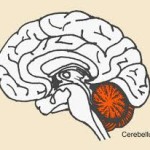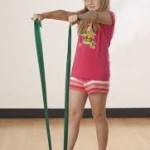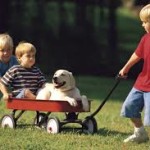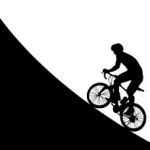In the last issue, I wrote about transitions and ways to make it easier for families and children. This issue is about a c ommon OT phrase… “heavy muscle work”.
ommon OT phrase… “heavy muscle work”.
Brainwaves is a monthly newsletter designed to create some “brainwaves” within my community of colleagues, friends and clients.
What is “heavy muscle work”?
It is interesting that when I did a google search on “heavy muscle work”, I come across weightlifting websites and sensory processing websites! www.sensory-processing-disorder.com states that heavy work activities use the proprioceptive system…“Proprioceptive input is the performance of tasks that involve heavy resistance and input to the muscles and joints, and is essential in helping our bodies assimilate and process both movement (vestibular) and touch (tactile) information.” So, essentially it is very much like weight lifting, but with a twist!
Who is heavy muscle work good for?
Heavy muscle work is good for everyone but, in occupational therapy, we focus on how it helps individuals who have a hard time focusing, and are dysregulated (emotionally or physically) because of over or under-sensitivity.
It is a great tool for calming down, waking up and feeling good!
The interesting thing about heavy muscle work is that it works to up-regulate (or wake up) those that are low in their arousal (seem sleepy, sluggish or unmotivated) AND down-regulate (or calm down) those that are very high in their arousal (hyper, anxious, or distractible).
How does it work?
There is lots of new research on the impact of exercise and the brain. John Ratey’s book “Spark” lists all sorts of research.  Although many researchers will state that you need at least 10 minutes of exercise to trigger the brain to release “feel good” chemicals, most OT’s will tell you that even a few minutes of heavy muscle work can settle a noisy, rambunctious group of students, although, some children/students will require more intensity than others. Heavy muscle work works through the part of the brain called the “cerebellum”, which contains more than 50{fb77b192ed3f659010b373aa76e3ef745402ce98197ff46607423210502ecae1} of the total number of neurons in the brain (although is only 10{fb77b192ed3f659010b373aa76e3ef745402ce98197ff46607423210502ecae1} of the brain’s volume)!
Although many researchers will state that you need at least 10 minutes of exercise to trigger the brain to release “feel good” chemicals, most OT’s will tell you that even a few minutes of heavy muscle work can settle a noisy, rambunctious group of students, although, some children/students will require more intensity than others. Heavy muscle work works through the part of the brain called the “cerebellum”, which contains more than 50{fb77b192ed3f659010b373aa76e3ef745402ce98197ff46607423210502ecae1} of the total number of neurons in the brain (although is only 10{fb77b192ed3f659010b373aa76e3ef745402ce98197ff46607423210502ecae1} of the brain’s volume)!
PLANNING FOR HEAVY MUSCLE WORK (HMW)…
My upcoming workshop “Understanding Behavior from a Sensation Point of View”on February 3 will give you a lot of information about planning for heavy muscle work, but here are a few ideas to get you going…
You can use heavy muscle work in whole body movements, oral motor movements and fine motor movements. This issue will consider whole body actions involving moving, pulling, lifting/carrying, pushing, and playing.
Moving – Low HMW – walking, light jogging, standing
- High HMW – walking with a heavy-ish backpack*, jogging uphill or hiking on uneven groud, yoga moves with sustained postures
(*weight should never exceed 10{fb77b192ed3f659010b373aa76e3ef745402ce98197ff46607423210502ecae1} of body weight and backpacks should always fit properly and be securely fastened to a person’s body using the waist belt.)
 Pulling – Low HMW – pulling an empty wagon, pulling a toboggan, pulling a blanket, using low resistance bands or tubing
Pulling – Low HMW – pulling an empty wagon, pulling a toboggan, pulling a blanket, using low resistance bands or tubing
- High HMW – pulling a wagon with snow or rocks, pulling a toboggan uphill, pulling a blanket with a child on it, wall or rope climging, high resistance bands or tubing
Lifting/carrying – Low HMW – carrying one book, mom carrying a backpack, carrying one can from the groceries, pushing chairs, standing
- High HMW -lifting and carrying a box of books, lifting and carrying their own backpack, carryng a bag of groceries, stacking and unstacking chairs at school, pulling and putting mats away in gym, wall or desk or chair push-ups, cleaning white board with arms elevated
 Pushing – Low HMW -pushing an empty cart, running beside a friend in a wagon, watching children swinging, vacuuming a tile floor, wiping a white board
Pushing – Low HMW -pushing an empty cart, running beside a friend in a wagon, watching children swinging, vacuuming a tile floor, wiping a white board
- High HMW -pushing a grocery or book cart, pushing friends in a wagon, pushing a friend on swing, vacuuming carpet, wiping a dirty countertop with a clothe, pushing body parts against each other (isometrics)
Playing – Low HMW – board games, playing in a sandbox, Wii bowling, riding a bike
- High HMW – building a snow fort, digging in sand at the beach, obstacle
 course in the basement, riding a bike uphill
course in the basement, riding a bike uphill
